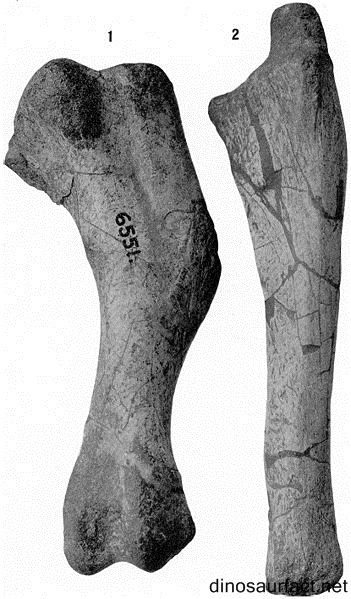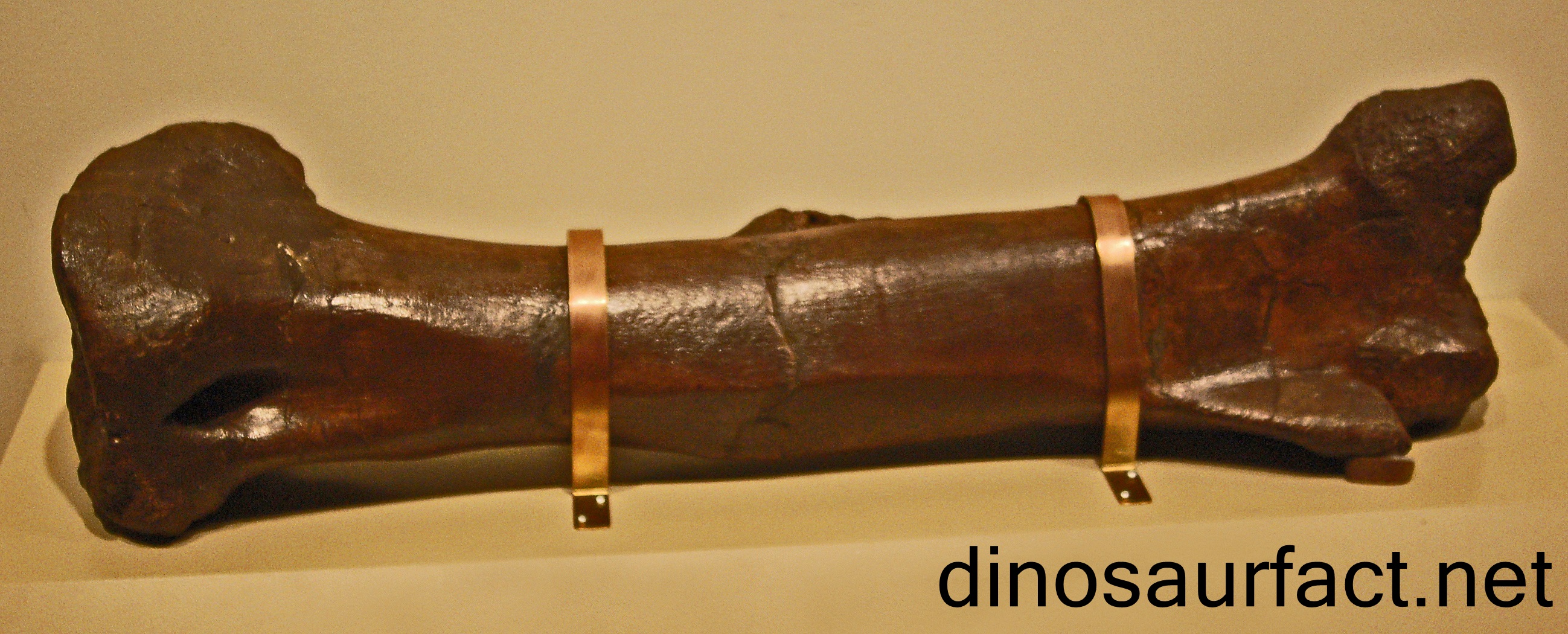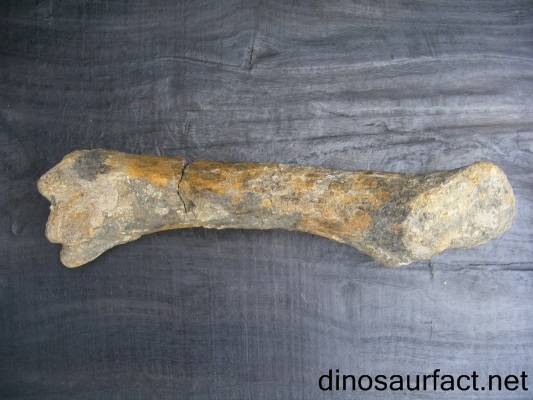 Click to visit the previous dinosaur bio
Click to visit the previous dinosaur bio
 |
|
 |
|
Kingdom: Animalia
Phylum: Chordata
Class: Sauropsida
Superorder: Dinosauria
Order: Theropoda
Suborder: Neotheropoda
Family: Coelophysoidea
Genus: Dolichosuchus
 |
|
 |
|
 |
|

The Dolichosuchus was a theropod dinosaur that lived in the middle to late Triassic period. As there is very little fossil evidence available about the Dolichosuchus, the exact time of its existence cannot be pointed out. It is estimated that it could have existed anywhere from 250 to 200 million years ago.
The Dolichosuchus was most likely of similar size as other theropods. This would be about 30 to 100 kilos in weight and about 1 to 3 meter in length. Some scientists have observed that the Dolichosuchus could possibly have been larger; weighing more than 150 kilos, but there is no fossil evidence corroborating these claims.
The Dolichosuchus was carnivorous in its feeding habits. It was an adept runner like other dinosaurs of its class.
It was initially classified as a dinosaur which resembled a crocodilian. This was probably assumed owing to the size of its tibial bone. But when the remains were further analyzed over the years, it was classified as a dinosaur belonging to sub order theropoda and super family Coeleophsoidea.
Etymology
The word 'suchus' translates to 'crocodile' in Latin. The prefix 'dolicho' is generally ascribed to indicate something long. The word 'dolichocehaplic' is an example of the prefix, which translated to 'long snouted'.
Thus dolichosuchus means 'long crocodile'. This nomenclature was mostly adopted due to the original belief that the Dolichosuchus had a crocodilian appearance.
Taxonomic Classification
- The Dolichosuchus was initially attributed to belong to family Hallopodidae. This family is now disregarded as no other species are ascribed to it.
- The tibia of the Dolichosuchus was later believed to be that of a theropod. Hence it was classified under clade 'Neotheropoda', which includes the more evolved theropods.
- The generic name 'Dolichosuchus' was ascribed to the remains by von Huene in 1932. This genus is considered of doubtful origin however, as only a single bone was discovered of the organism belonging to it.
- The specific name Dolichosuchus cristatus was given by paleontologist R. Steel in the year 1970.
Discovery of fossils
The remains of the Dolichosuchus were discovered in Germany in the lower or middle portion of the Stubensandstein formation. Only one bone of the shank region, the tibia was discovered.
The tibia connects the femur to the ankle bones. A rough estimate of size and length of the animal can be estimated by the leg bone. The length of the bone can delineate the length of the organism. The locations for muscle attachment can indicate how strongly built the animal was.
Based on the parameters of the tibia, the Dolichosuchus is presumed to be a relatively small dinosaur, belonging to sub order Theropoda.
Friedrich von Huene
Friedrich von Huene was a paleontologist born in Tubingen, Germany. He is renowned worldwide for is excellent work in classifying dinosaur species. F. von Huene had discovered a large number of dinosaur fossil specimens in his lifetime. He had suggested many intricate classifications for the fossils that he had discovered. Many of these classifications are used even today in contemporary taxonomy.
The dinosaur Liassaurus hueni was named in his honor.
F. von Huene passed away at the ripe age of 94 in his home town of Tubingen.
The Stubensandstein formation
The Stubensandstein is a geological rock formation which is a part of the Loweinstein formation in Germany. It is called Stubensandstein in the Baden-Wurttemburg region. It consists of fossils of the Norian and Rhaetian ages of the Triassic period.
- The stones of this formation lie in the Keuper strata, which is the upper region, of the German rock formation. It consists predominantly of sandstones. These are mostly monochromic rocks. They are invaded in the middle with the colorful mudstones. The thickness of this structure varies in different places, but on an average it is 130 meters deep.
- The fossilized remains of many organisms from the Triassic period were found in this geological formation. They include the Dolichosuchus, the Haltichosaurus, the Paleosaurus, the Pachysaurus, the Terratosaurus and many more. Many specimen of turtles, tortoises, clams, shell fish and aquatic and terrestrial vertebrates were found in the structure.
- This region was also economically important in the middle ages as the rocks were soft and had water deposits intermittently which could be drilled for wells.
The significance of this region in the field of evolutionary paleontology is invaluable.
Habits and habitat
The Dolichosuchus was a terrestrial dinosaur. It dwelled in the river lands and swamps, most likely predating on small aquatic and amphibious creatures. It was adapted to running fast, which was necessary to catch its prey as well as out run the other larger carnivores of the Triassic period.
Related and co existing species
As only one single bone has been ascribed to the Dolichosuchus, it is difficult to determine which dinosaurs it may have been related to. But many paleontologists have observed similarities between the tibia of the Dolichosuchus and those of the Liliensternus and the Dilophosaurus. The remains of both these dinosaurs were found in Germany.
It is possible that the Dolichosuchus co-existed with other reptilians and amphibians of the Triassic period. Many other fossils were found in the Stubensandstein Formation along with the Dolichosuchus. As the exact time of its existence is unknown, it is not possible to determine with absolute certainty which of the discovered fossilized creatures existed alongside the Dolichosuchus.
Final notes
The information available about the Dolichosuchus is extrapolated from the single bone that was discovered in Germany. Although there are enough fossils to compare the bone with, explicit details about the organism cannot be determined.
Many modifications have been made in the classification of the Dolichosuchus since the discovery of the fossils. And most of these were made after further information about other dinosaurs was discovered. There are still many lacunae in the data available about the Dolichosuchus.
The genus is still considered nomen dubitum or of dubious origin currently. No other dinosaur has been discovered belonging to the same genus. Many scientists believe that the genus will be disregarded once more evidence is unearthed.
The most recent belief about the Dolichosuchus is that it was a theropod dinosaur. Any other information about it may be considered inaccurate.
Index
Extinct Profiles
 Triassic Dinosaurs
Triassic Dinosaurs Jurassic Dinosaurs
Jurassic Dinosaurs Cretaceous Dinosaurs
Cretaceous Dinosaurs Pterosaurs
Pterosaurs Marine Reptiles
Marine Reptiles Dinosaur Extinction
Dinosaur Extinction